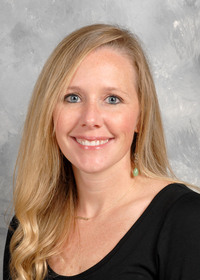Information Possibly Outdated
The information presented on this page was originally released on July 12, 2012. It may not be outdated, but please search our site for more current information. If you plan to quote or reference this information in a publication, please check with the Extension specialist or author before proceeding.
New computer options depend on student needs
Summer is slipping by, and school supplies are already making their way into large bins at local stores. The back-to-school marketing event is an excellent time to consider purchasing a new computer; many stores will have them on sale beginning in August.
Buying a computer can be a daunting task, but there are several things to keep in mind when shopping for a computer. First, consider who will be using the computer. Second, consider what its primary purpose will be. Computers used to check email need significantly less memory and hard drive space than computers used for playing computer games.
Before buying a computer for a college-bound student, contact the college department he or she will be enrolled in and ask if the department has any special requirements for student computers. For example, many communications, engineering and art programs require specific hardware.
The technical term “hardware specifications” refers to the computer’s ability to perform. If a computer comes equipped with a 500 GB (gigabyte) hard drive, that means the computer can store about 128,000 (4 MB high resolution) images. Most computers on the market today come with at least a 500 GB hard drive. A 500 GB hard drive is fine for the everyday user. The next size up is 1000 GB, which is also known as 1 TB (terabyte). Many manufacturers are choosing to market their computers with 1000 GB rather than 1 TB because 1000 GB sounds more impressive.
Manufacturers will try to save money or reduce the cost of the computer by lowering the amount of memory. Memory, or RAM (Random Access Memory), as it is also called, helps determine how fast the computer retrieves and processes information. More RAM equals a faster computer. Most computers on the market today come equipped with 6 GB of memory.
There are three basic types of computers: desktop, laptop and netbook. A netbook is appropriate only for checking email and running one or two programs at a time. The biggest difference between a laptop and a desktop is that the desktop is stationary and therefore more durable. A desktop is also easier to work on if it needs repairs. A laptop is best for portability. There are several other items to consider, such as the productivity software (like Microsoft Office, Corel or OpenOffice), and the antivirus software.
A good rule of thumb is to purchase as much hard drive and memory as you can afford. However, hard drive and memory will be of little value if you fail to adequately maintain your computer and avoid viruses and malware.



